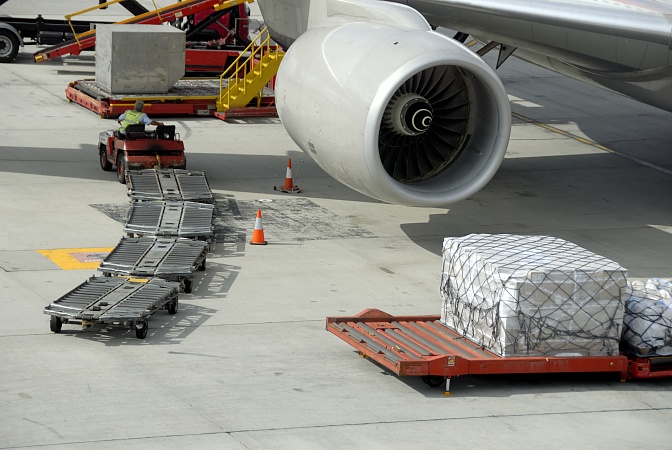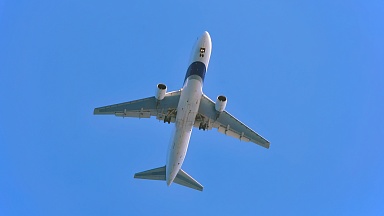Capacity remains very tight for full freighters while the space offered by passenger aircraft operating in all-cargo mode (known as preighters or P2Fs) ) is also in high demand, Chapman Freeborn’s head of cargo, Pierre Van der Stichele, told Lloyd’s Loading List.
«Between spring and summer we did see a slight easing for a short period but the capacity crunch is back on. Due to recent events taking place in the world, such as the recent earthquake in Haiti, we are already seeing further demand with relief agencies needing capacity for humanitarian flights.»
He said it was «practically impossible» to obtain wide-bodied freighter capacity at short notice unless there was a last-minute cancellation of a flight which sometimes occurs due to a delay with cargo.«
Air Charter Service’s (ACS) director, London Cargo, James Cristofoli, explained to Lloyd’s Loading List that over the last few months, the company had continued to see a rise in charter prices on the major trade lanes — «a sign that capacity is squeezing slightly. There is some ’short notice’ capacity but you have to pay a premium for it and it might not meet all of your requirements.»
Pax-to-cargo conversions
As for the prospect of significantly more cargo capacity becoming available to the market in the short; even the mid-term, Van der Stichele sounded a cautious tone.
«A number of aircraft that were in storage are being reactivated but very few have been put back into service yet and the stock of stored aircraft is actually very limited. There is also the issue that many of these aircraft must undergo maintenance checks and there is limited hangarage slots and MRO facilities are stretched.
«The freighter fleet currently in operation today must also be serviced at some point so the addition of aircraft coming out of storage is putting the pressure on MRO facilities. Many carriers have made commitments for aircraft conversions from pax-to-cargo. However, there is a lag between orders and conversions so it will be at least a year before we start seeing any of these aircraft in action simply because the conversion sites are fully booked for the next two to three years.»
Preighters ’have been vital’
The re-opening of air travel markets has led to significant numbers of preighters returning to pax mode, particularly on trans-Pacific routes, according to anecdotal accounts, raising concerns that the air freight capacity squeeze will intensify as peak season approaches. However, Cristofoli played down the impact of such moves.
«As preighters hold restrictions on what they are able to carry in the cabin (in terms of weight, dimensions and dangerous goods), the loss of the cabin capacity they provided isn’t the end of the world. Also, as airlines move their aircraft back to pax mode, one could expect that they will also be reactivating stored aircraft and will therefore be able to offer further belly capacity to the market. This increased belly capacity won’t immediately outweigh the loss of cabin capacity but as travel markets continue to open, this would likely happen quite quickly.»
He continued: «I think it is hard to overestimate how important preighters have been in the last 17 months. They have been vital to the global economy by supplying air freight capacity and allowing trade to continue. They have also been essential in helping in the fight against COVID by transporting PPE, test kits and vaccines.»
Van der Stichele acknowledged that «sadly some carriers are returning their P2F’s back into passenger configuration» but in Chapman Freeborn’s case the number of flights it has signed up for using aircraft in this mode remains on the increase and this will continue into the peak season, he said.
«Any capacity is significant (in the current market) but not sufficient. Preighters are limited in the type of freight they can carry but every day we are being asked to offer P2Fs for e-commerce freight which is not always possible due to cabin restrictions.»
‘As things stand, we are already, in August, feeling the impact of the approaching peak season. Rates are on the rise and aircraft availability is scarce, even with good P2Fs offering good volumes and payloads.«
Rates on the up
Since March 2020, air cargo charter rates have been higher than pre-COVID and at their highest levels reached close to +200%, Van der Stiche noted. «We experienced a drop in rates early summer but that’s picked up again. Rates are not as high as they were at the height of the PPE transport surge but are very likely to return (to such levels) once we enter the peak season — it’s a matter of a week or two in my opinion. Additionally, fuel prices are increasing which is further raising charter rates.»
Cristofoli said rates have been slowly increasing over the last 2-3 months and remain at elevated levels — «although they are not yet back to their mid-pandemic highs.»
He said ACS is seeing strong demand for air cargo charter capacity «on the traditional trans-Pacific and China-Europe routes.
«It is hard for us to know the precise driver behind all our charter enquiries. However, it is likely that the ocean freight chaos has pushed some shippers and forwarders towards air charters, where they will make the comparison of ’sea freight cost + late penalty’ versus ’air charter cost.’ E-commerce is still a large piece of the air cargo puzzle. Due to its relatively predictable nature, this segment of the market gives shippers and forwarders the confidence to secure long term air charter capacity.»
Van der Stichele highlighted that demand «is strongest between China-Europe and China-US which doesn’t mean that other sectors are not experiencing growth. Middle East-Africa for instance is also in high demand as well as Asia-Middle East.
«Bottlenecks at sea ports have led directly to overspills into airfreight while cross-border e-commerce continues to be a major driver (for air cargo charters). COVID has sent online purchasing through the roof and consumer expectation is for short delivery spans.»
PPE shipment fall-off
As for the latest trends in PPE and vaccine shipments, ACS’ Cristofoli noted that most countries «have now built up their stocks and there are steady supply chains in place, so we see few requests to charter aircraft.
‘There has not been the huge amount of vaccine transport that was initially predicted. IATA predicted it could mean up to 8,000 B747F loads. Most of the charter flights we have arranged with vaccines are transporting relatively small amounts between nations. Currently, the main COVID-related trend is to transport test kits from Asia.’
Van Stichele also noted the significant tail-off in demand for air charters carrying PPE, «such commodities having played an important role in the first 6-8 months into the pandemic. Now we see a broader range of COVID-related goods, from oxygen equipment to vaccines, ventilators and even raw materials that make up the vaccines.»
Demand likely to outstrip capacity
Turning to the market outlook, he said: «The coming months will be extremely challenging and right now we do not see a respite anytime soon.»
Cristofoli concluded: «We are predicting that, as usual, demand on almost all lanes will increase gradually and significantly between now and the end of Q4. We expect that this increase in demand will likely outstrip any increase in capacity being added to the market, resulting in higher rates and increased difficulty in securing capacity in November and early December.»





